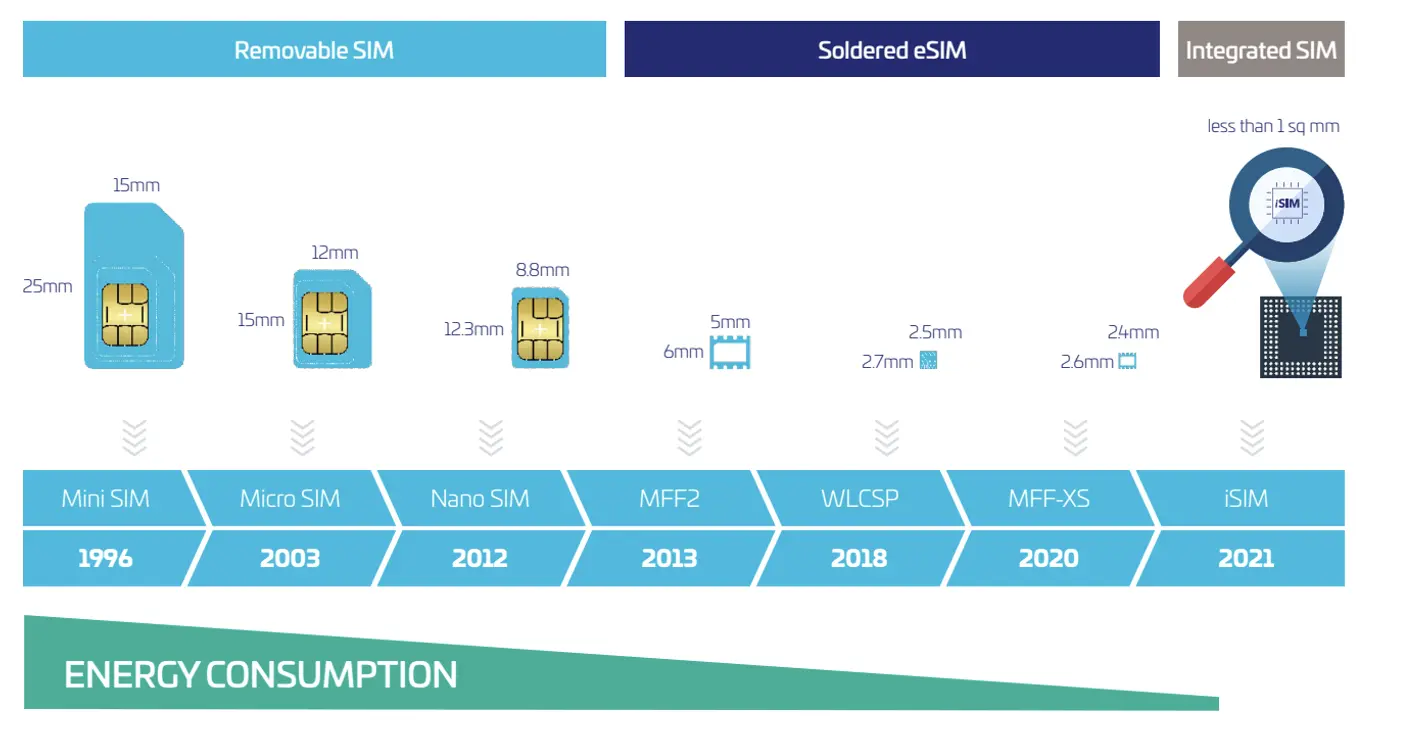What does iSIM mean and what are the differences compared to SIM and eSIM
Before you see what iSIM means and what are the characteristics of this technology, let's take a look back at the technologies that were the basis of the identification of mobile devices in communication networks.
Until now, we have gotten used to smartphones and iPhones being with SIM or eSIM. In the case of the classic SIM, there were several stages in which the famous "SIM card" became smaller and smaller. SIM evolution (Subscriber Identity Module) started with Mini SIM in 1996, Micro SIM in 2003 and until Nano SIM in 2012.
eSIM (embedded-SIM) is a newer technology, appeared in 2016, which replaces the physical SIM with one built into the device. This is an chip eUICC permanently attached, which cannot be changed or removed from the phone or smartwatch. Changing the phone number is done on the basis of a network application, from the phone menu.
Although the first eSIM was introduced for the first time on the Samsung Gear S2 Classic 3G smartwatch in 2016, Apple implemented this technology in 2018 on the iPhone XS, and only in 2022 will it launch the iPhone 14 range exclusively with eSIM. But not in all countries. In 2023, when I write this article, globally there are many telecommunications operators that do not offer eSIM support. So the iPhone 14 exclusively with eSIM was launched only for the USA. In the other countries, the iPhone 14 came in a Dual-SIM version (SIM and eSIM).
What does iSIM mean and what characteristics differentiate it from SIM and eSIM?
iSIM means Integrated Subscriber Identity Module, and as the name says, it integrates directly into the device's processor, without taking up any space and with minimal energy consumption, compared to eSIM.
The main advantages of iSIM are:
1. The space occupied in the device is eliminated, the iSIM being integrated into the device's processor and having the size of 1 mm. For device manufacturers, the space occupied under the case is extremely important. And let's not only think about mobile phones. There are many other miniature devices that need connection to communication networks. From spying and tracking devices to fixed outdoor devices.
2. Another aspect is energy consumption. Being fed together with the process, the energy consumption of the iSIM is insignificant to be taken into account. This means a greater autonomy of the battery on devices with iSIM. Especially the small ones, where the batteries are of reduced capacity.
3. The security of the device is increased, compared to SIM and eSIM. Being integrated directly into the phone's application processor, iSIM benefits from its security enclave.
The first phones with iSIM
Most likely iSIM will be present on the Samsung Galaxy range from 2023 or 2024 and it is possible that this technology will be implemented quite quickly by Apple on the future generations of iPhones and iPads from 2024. If in the case of eSIM technology, the Apple company was skepticism, the same thing does not happen with iSIM, which offers increased security and obvious advantages.
iSIM – Summary
iSIM is integrated into the processor of the phone or device, replacing the physical SIM attached to the phone or the eUICC chip (eSIM) built into the motherboard. It occupies a small space, allowing manufacturers to design devices of small dimensions, consumes very little energy and offers increased security.

